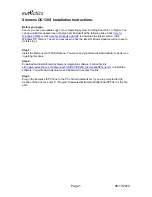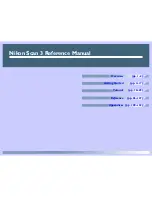
Security
ExtremeWare XOS 11.1 Concepts Guide
246
get changes in the users file to take place. Extreme RADIUS uses the file named profiles to specify
command lists that are either permitted or denied to a user based on their login identity. Changes to the
profiles file require the RADIUS server to be shutdown and restarted. Sending a HUP signal to the
RADIUS process is not enough to force changes to the profiles file to take effect.
When you create command profiles, you can use an asterisk to indicate any possible ending to any
particular command. The asterisk cannot be used as the beginning of a command. Reserved words for
commands are matched exactly to those in the profiles file. Due to the exact match, it is not enough to
simply enter “sh” for “show” in the profiles file, the complete word must be used. Commands can still
be entered in the switch in partial format.
When you use per-command authentication, you must ensure that communication between the
switch(es) and radius server(s) is not lost. If the RADIUS server crashes while users are logged in, they
will have full administrative access to the switch until they log out. Using two RADIUS servers and
enabling idle timeouts on all switches will greatly reduce the chance of a user gaining elevated access
due to RADIUS server problems.
RADIUS Server Configuration Example (Merit)
Many implementations of RADIUS server use the publicly available Merit
©
AAA server application. To
get a copy, search for the server on the web site at:
www.merit.edu
Included below are excerpts from relevant portions of a sample Merit RADIUS server implementation.
The example shows excerpts from the client and user configuration files. The client configuration file
(
ClientCfg.txt
) defines the authorized source machine, source name, and access level. The user
configuration file (
users
) defines username, password, and service type information.
ClientCfg.txt
#Client Name
Key
[type]
[version]
[prefix]
#----------------
---------------
--------------
---------
--------
#10.1.2.3:256
test
type = nas
v2
pfx
#pm1
%^$%#*(&!(*&)+
type=nas
pm1.
#pm2
:-):-(;^):-}!
type nas
pm2.
#merit.edu/homeless hmoemreilte.ses
#homeless
testing
type proxy
v1
#xyz.merit.edu
moretesting
type=Ascend:NAS v1
#anyoldthing:1234
whoknows?
type=NAS+ACCT_RFC
10.202.1.3
andrew-linux
type=nas
10.203.1.41
eric
type=nas
10.203.1.42
eric
type=nas
10.0.52.14
samf
type=nas
users
user
Password = ""
Filter-Id = "unlim"
admin
Password = "", Service-Type = Administrative
Filter-Id = "unlim"
eric Password = "", Service-Type = Administrative
Filter-Id = "unlim"
albert
Password = "password", Service-Type = Administrative
Содержание ExtremeWare XOS 11.1
Страница 16: ...Contents ExtremeWare XOS 11 1 Concepts Guide 16...
Страница 20: ...Preface ExtremeWare XOS 11 1 Concepts Guide 20...
Страница 21: ...1 Using ExtremeWare XOS...
Страница 22: ......
Страница 78: ...Managing the ExtremeWare XOS Software ExtremeWare XOS 11 1 Concepts Guide 78...
Страница 168: ...Virtual LANs ExtremeWare XOS 11 1 Concepts Guide 168...
Страница 200: ...Policies and ACLs ExtremeWare XOS 11 1 Concepts Guide 200...
Страница 252: ...Security ExtremeWare XOS 11 1 Concepts Guide 252...
Страница 265: ...2 Using Switching and Routing Protocols...
Страница 266: ......
Страница 294: ...Ethernet Automatic Protection Switching ExtremeWare XOS 11 1 Concepts Guide 294...
Страница 354: ...Extreme Standby Router Protocol ExtremeWare XOS 11 1 Concepts Guide 354...
Страница 416: ...IP Multicast Routing ExtremeWare XOS 11 1 Concepts Guide 416...
Страница 417: ...3 Appendixes...
Страница 418: ......
Страница 432: ...Software Upgrade and Boot Options ExtremeWare XOS 11 1 Concepts Guide 432...
















































